Sonos Arc soundbar review: sleek, powerful and Dolby Atmos-compatible
Easy to set up, easy to use, wonderfully versatile and boasting great audio performance all for under a grand, there’s a lot to love about the Sonos Arc.
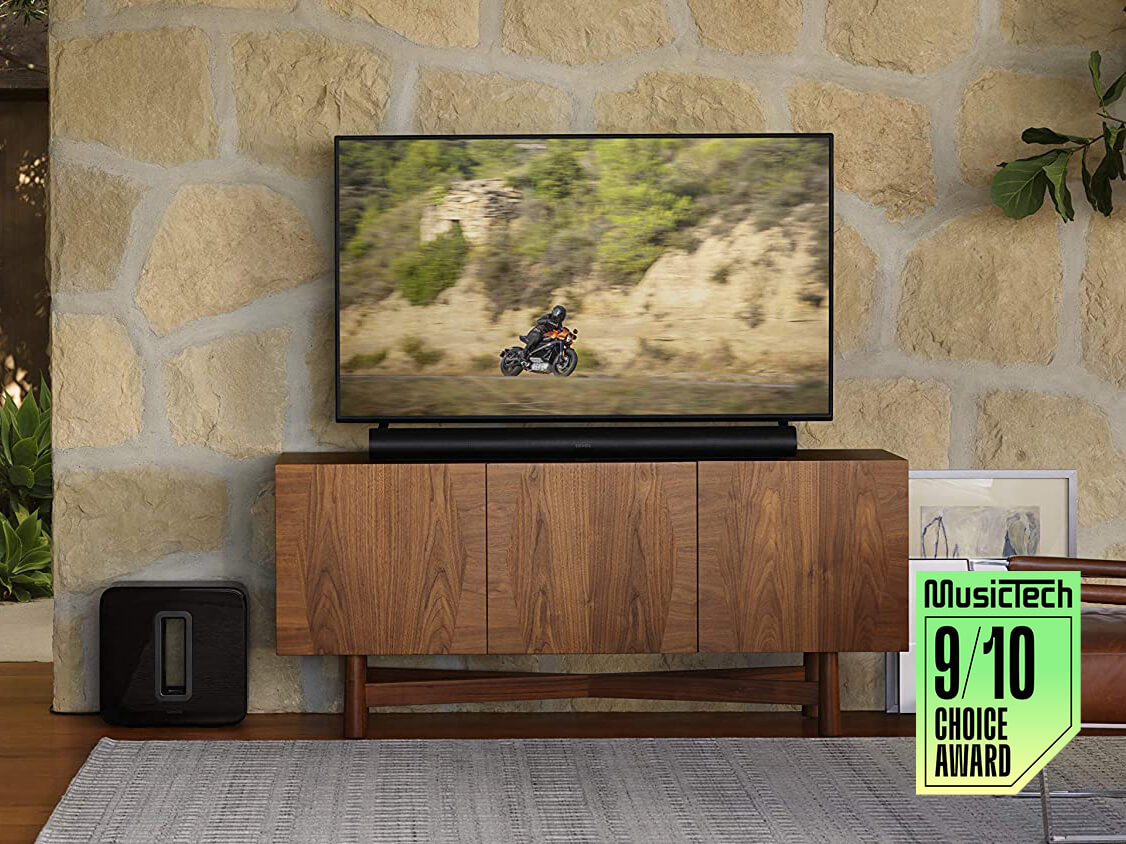
Review Overview
Our rating
9
Our verdict
⊕ Dolby Atmos surround sound supported
⊕ Low-profile design
⊕ Fantastic overall performance
⊖ No remote control included
⊖ No support for DTS: X
⊖ Can only calibrate via iOS devices
The Sonos Arc is a large all-in-one soundbar from home audio hardware maker and streaming service provider Sonos.
- READ MORE: Sonos Beam Gen 2 review: excellent value for those who want a full surround sound experience
It’s the first soundbar from Sonos to support Dolby Atmos, meaning content supporting the 3D audio standard promises to sound even more immersive through the Sonos Arc’s 11 drivers.
Billed as a 5.0.2-channel soundbar, the Arc can be paired with other Sonos speakers including the Sonos Sub G3 wireless subwoofer, and either two Sonos Ones or Sonos Fives, to act as side speakers, transforming your setup into a fully-fledged surround sound system.
The Sonos Arc also functions as a music speaker in its own right. It’s designed to be easily paired with other Sonos wireless speakers you have, allowing you to conveniently pipe music throughout the home.
As well as letting you access streaming services like Bandcamp and Spotify through the Sonos mobile apps, you can also stream audio to the Sonos Arc via Apple AirPlay 2. Amazon Alexa and Google Assistant voice assistant support is also built in.
However you’re set up for wireless audio in the home, how does the Sonos Arc function as a soundbar?
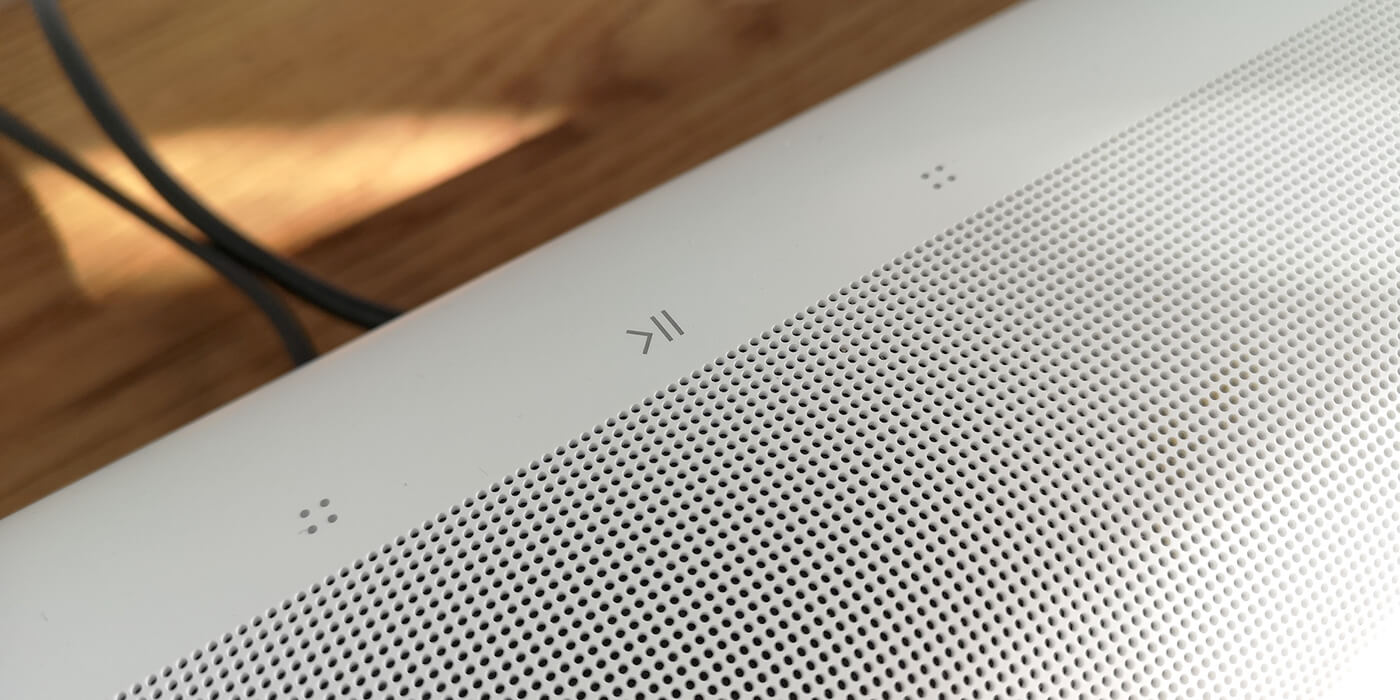
What you get
The Sonos Arc is a minimalist-looking soundbar with a micro-drilled metal front and plastic edging on the back and sides, and is available to buy in either white or black.
The Arc only comes with an HDMI cable and the power cable in the box. There’s no remote control, but that’s because the Sonos Arc is designed to work like other Sonos devices: the Sonos mobile app (iOS, Android) controls the unit.
The HDMI port supports eARC, so once you’ve connected the Sonos Arc to your TV and plugged it in, you’ll be able to adjust volume with your TV’s remote as usual.
An official HDMI-to-optical adapter is available to buy separately for those with older TVs, but otherwise, in terms of physical connections, the only other thing on the Sonos Arc is an Ethernet port. And that’s only a backup option for if you can’t connect the Sonos Arc to your router via WiFi (2.4GHz only).
Touch-sensitive controls for media playback and the far-field microphone sit on the top of the Sonos Arc. Besides these and a physical ‘join’ button, which you should only have to press and hold once during set-up, there are no other physical controls or connections on the device.
This gives the Sonos Arc a very smooth and streamlined appearance, which belies the fact that it’s actually pretty big, measuring over a metre (114cm) wide. It’s not as tall or deep as other soundbars, like the Sennheiser Ambeo Soundbar and the Bang & Olufsen Beosound Stage, but it’s bigger than the Sonos Beam Gen 2. The relatively low profile (8.7cm high, 11.5cm deep), means that you should be able to position the Sonos Arc on a stand or beneath most TVs with little bother.
Two of the speakers are set into the top of the Sonos Arc, and there’s one speaker on each end. As with the Samsung S60A, you’ll need to consider where you’re setting this up, lest any of those side-fired ambient noises get muffled and lost. If you don’t have the shelf space, then you’ll need to invest in a wall mount.
The Sonos Arc is also fairly light (6.25kg) and the weight is evenly distributed throughout, which means it’s easy to lug around and reposition. The rubberised feet means it sits easily on most shelves and stands.

Setting up
To get the most out of the Sonos Arc, you’ll need to download the Sonos app(s), have your home WiFi network password (or an Ethernet cable) to hand, and create a Sonos account, if you’ve not done that already. The apps guide you through the whole process, which shouldn’t take any longer than five minutes.
Once the Sonos Arc is connected to your home network, you’ll be able to use the app to pair it with compatible Sonos speakers, either for multi-room music streaming purposes, or to create a wireless surround sound system in your living room. Setting up the latter is a simple task of going to Settings, System, selecting the Arc as it appears on the menu, and following the on-screen instructions to connect everything else to your WiFi network.
If you have an iOS device, you can calibrate the Sonos Arc via a feature in the app called Trueplay Tuning. This calibrates the Arc to better suit the natural acoustics of your room, so it’s better able to reflect ambient noises off of any nearby walls, floors and corners. However, Trueplay Tuning is currently not accessible via the Android version of the Sonos app, and it’s unclear when or even if this will change.
For TV viewing, there are a pair of sound modes available: Night Sound mode, which flattens the overall sound profile, and Speech Enhancement, which gives TV and movie dialogue a slight lift. The two modes can be combined, so conscientious viewers can make sure the rest of the household isn’t woken up by late-night Squid Game binges.
You can also make use of a simple equaliser, which lets you lower and raise bass and treble levels, as well as a Loudness toggle, which boosts low frequencies when the volume is turned down. Naturally, the latter setting can make audio sound compressed at higher volumes, something that’s especially noticeable when listening to music.
While the Sonos app does a lot, and puts a lot of neat features at your fingertips, it’s not the easiest layout to get accustomed to.
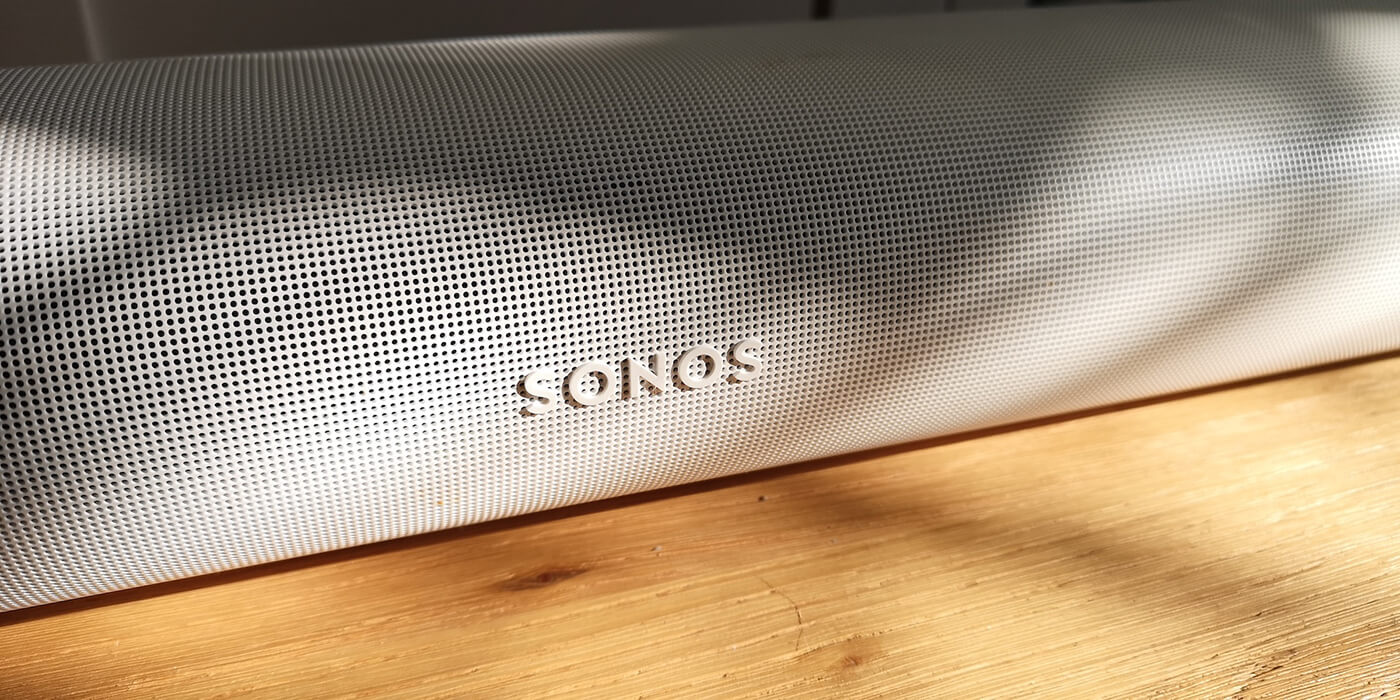
Sound quality
The Sonos Arc delivers excellent, crisp sound. While details on the full frequency range aren’t published, Sonos says that the Arc features 11 drivers in total: eight elliptical woofers – four on the front, two on the top and one on each side – and three angled side tweeters. All of these work in tandem to deliver clear, distinct dialogue on top of a rich and detailed mid-range and low frequencies.
Generally, everything is well defined and balanced. The bass response feels especially good given its size relative to that of its competitors. Low-end sounds don’t dwarf mid-range tones much, unless you’ve pushed the bass all the way up on the equaliser, and you’ve got the volume turned up high enough to rattle your windows.
I downloaded the recently-released 4K remaster of Crouching Tiger, Hidden Dragon on Sky Q to see how the Sonos Arc handled a film with a Dolby Atmos soundtrack.
Crouching Tiger is, for the most part, a quiet film. Subtle details, like that of the wind rushing through tree branches and the roll of a cartwheel on a cobbled street, travelled appropriately across the soundstage and created a pleasing sense of immersion.
The Sonos Arc was also good at projecting out-of-frame sounds – things like the sound of chopsticks tapping at noodle bowls or a disarmed weapon landing on the floor – to where you’d expect them to land, which really deepened the sense of immersion.
During the action scenes, everything erupted. Details like darts fired from blowpipes, and Michelle Yeoh’s Yu Shu Lien knocking a masked thief to the ground were accompanied by the rush of displaced air zipping from left to right, and the satisfying crunch of feet on gravel.
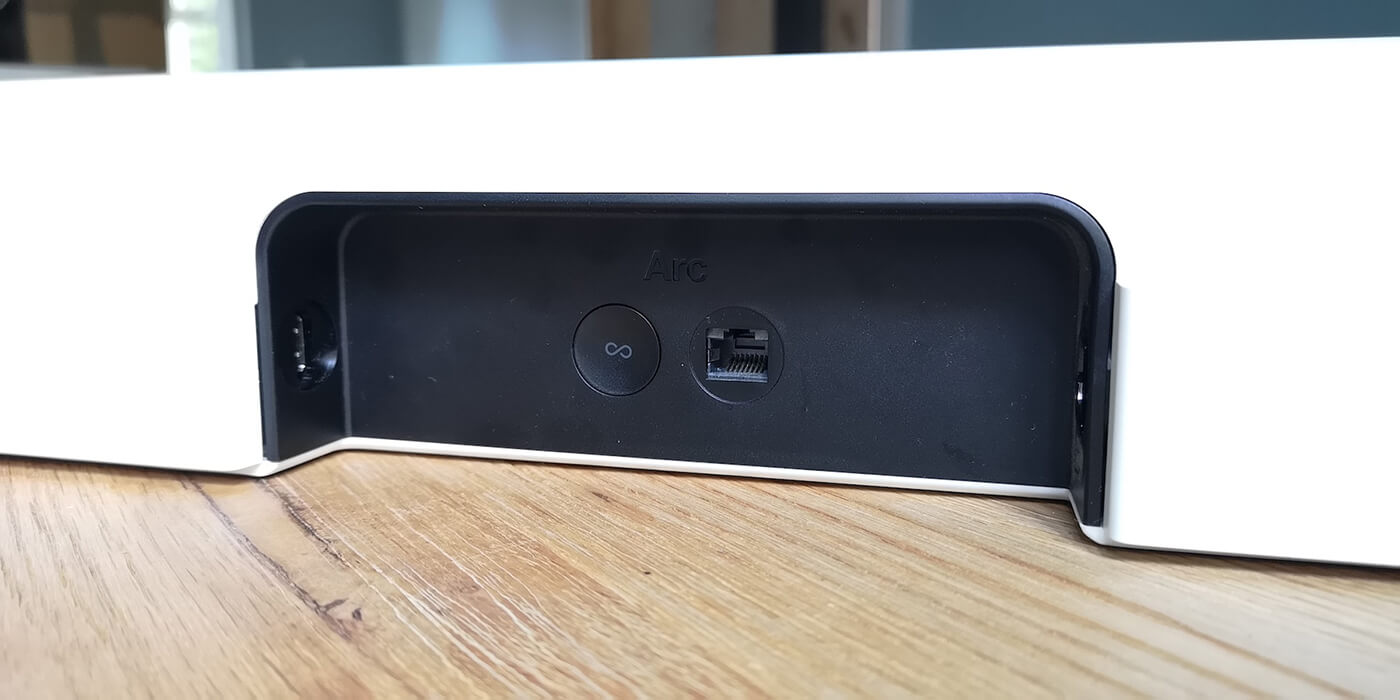
Of particular note was the fight on Yellow Hill. This scene is practically crammed with sonic gems, and it demonstrated how well the Sonos Arc can project sound upwards as well as laterally.
The duel begins with Jade Fox deflecting a sword strike from Inspector Tsai. The reverberation of the weapons clashing travelled up and to the left. Shortly after, the scene cuts to a pack of crows flapping up and away from a nearby tree. Besides impressively travelling through the soundstage, the clanging of struck metal edges, beating wings, and the scrabbling of feet on cobbles helped me orient myself in what is an intense, action-packed nighttime scene which can otherwise be tricky to follow.
The Sonos Arc made tracking the action not only easy but joyous. And it was even more impressive when you consider that this is just from a single soundbar with upward-firing speakers – not overhead in-ceiling speakers.
As with the B&O Beosound Stage, the Sonos Arc doesn’t support DTS:X or MPEG-H Audio, but until more content makes use of these 3D sound standards, that’s a problem that’s largely academic.
Streamed content with a 5.1 audio track, like Netflix’s The Alienist also sounded enriched and vivid. The first episode opens with a police officer walking down a snowy street towards the camera, footsteps crunching nicely and getting louder as they approach. Then there’s a cut to a close-up of the officer’s feet, walking left to right across the frame, with the sounds appropriately matched. Wind noises whistle in the distance, and the background music gently creeps in as the officer finds a severed hand in the snow. Stopping to look up from the hand, a drop of blood lands on the officer’s face. Everything was nicely separated in the mix and landed in the soundstage exactly where you’d expect it to.
As you might expect from Sonos, streamed music sounded fantastic. The fact that it’s easy to stream locally stored tracks and connect to third-party streaming services is a big feather in the Sonos Arc’s cap. And since it uses WiFi instead of a Bluetooth connection, it’s kinder to your phone’s battery, too.
I played the usual suite of test tracks to gauge how the Arc handled tracks with heavy basslines and generous amounts of reverb, resonance and acoustic guitar, paying close attention to the separation of elements within songs with a lot going on.
Dead Prez’s bass heavy Hip-Hop sounded clear and defined, although at high volumes, and with the bass pushed up to full on the EQ, the kick drum got a bit lost and merged with the overall bass sound. But unless you want to annoy the entire street, you’re probably not going to encounter this.
Reverb effects on vocals on Hip-Hope and on the snare hits and chopped-up guitars of Bauhaus’s She’s In Parties were clear and distinct, proving that music played through the Sonos Arc can go from loud to quiet without losing definition.
I Didn’t Change My Number by Billie Eilish benefitted from decent separation, with the vocal rising nicely above the bounce and snap of the rhythm track. Furthermore, the organ chords were distinct throughout the track despite being relatively low in the mix.
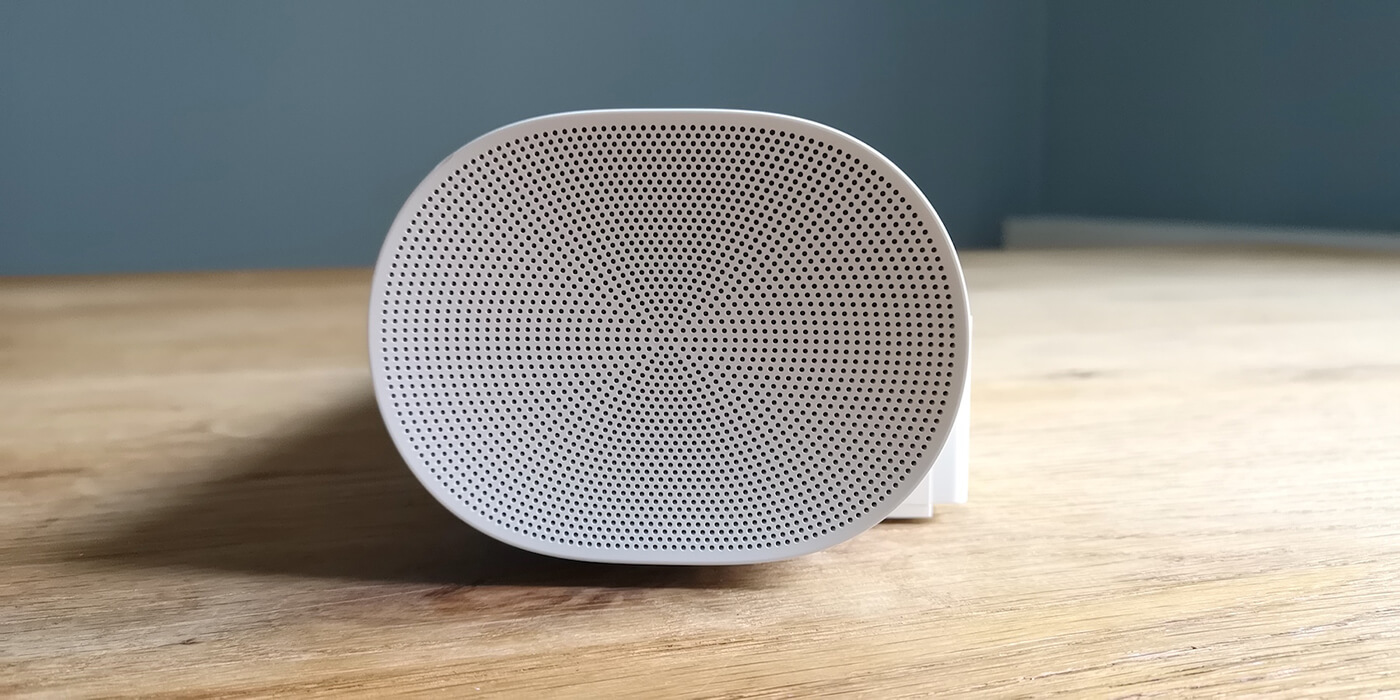
Likewise, Dave Brubeck’s Take Five sounded pristine. The tell with this track is when the drum improvisations begin around 2:30. There are lots of snare and tom rolls, which ramp up intensity for roughly two minutes before the main theme returns. This section can really reveal the limitations of speakers, as lesser hardware will render drums like tin cans rather than a proper kit. Again, distortion was only really apparent when the bass and volume was pushed up beyond levels most people would find to be ‘too loud’ anyway.
Acoustic guitar tracks like Nick Drake’s Things Behind The Sun, Steve Howe’s Mood For A Day, and Doc Watson’s Dill Pickle Rag sounded bright, perfectly clear and detailed.
The Sonos Arc is an excellent soundbar in its own right, perfectly suited for TV and movie watching, and it’s a fantastic entertainment centre, too. It can be easily expanded to add sides and a sub. If you’ve already got some compatible Sonos gear in your home, and you’re thinking about eventually having a big multi-speaker home cinema system, then it’s a no-brainer – you’re already part of the way there.
The main drawback of the Sonos Arc is the same as that of all soundbars of this size: not everyone will be able to accommodate this in their living rooms. If that sounds like you, the smaller Sonos Beam Gen 2, which features support for Dolby Atmos and Sonos multi-room, is the soundbar to buy.
While the Sonos Arc is attractively priced, too, at $/£899.99, we note that supply chain issues have forced it to increase prices from when it first launched.
You can currently pick up an Arc with a Sonos Sub G3 as a bundle for $/£1,648. If you want to buy a complete package, you can pick up a Sonos Arc with a Sonos Sub G3 and two Sonos One SL’s for around $2,086/£2,046. Otherwise, a Sonos Sub G3 costs $749/£749 and individual One SL’s cost $199/£179.
Alternatively, if you don’t have such an issue with space, and you have cash to burn, then consider the Sennheiser Ambeo Soundbar. It supports more 3D sound standards, can be paired with a subwoofer, and is just ridiculously powerful.

Key Features
- 5 channels and 11 speakers
- 2 modes: Night Sound, Speech Enhancement
- Inputs/Outputs: 1 x HDMI 2.0, 1 x Ethernet (10/100), Optical Audio
- Dimensions: 1141.7 x 87 x 115.7 mm
- Weight: 6.25kg
- $899/£899.99